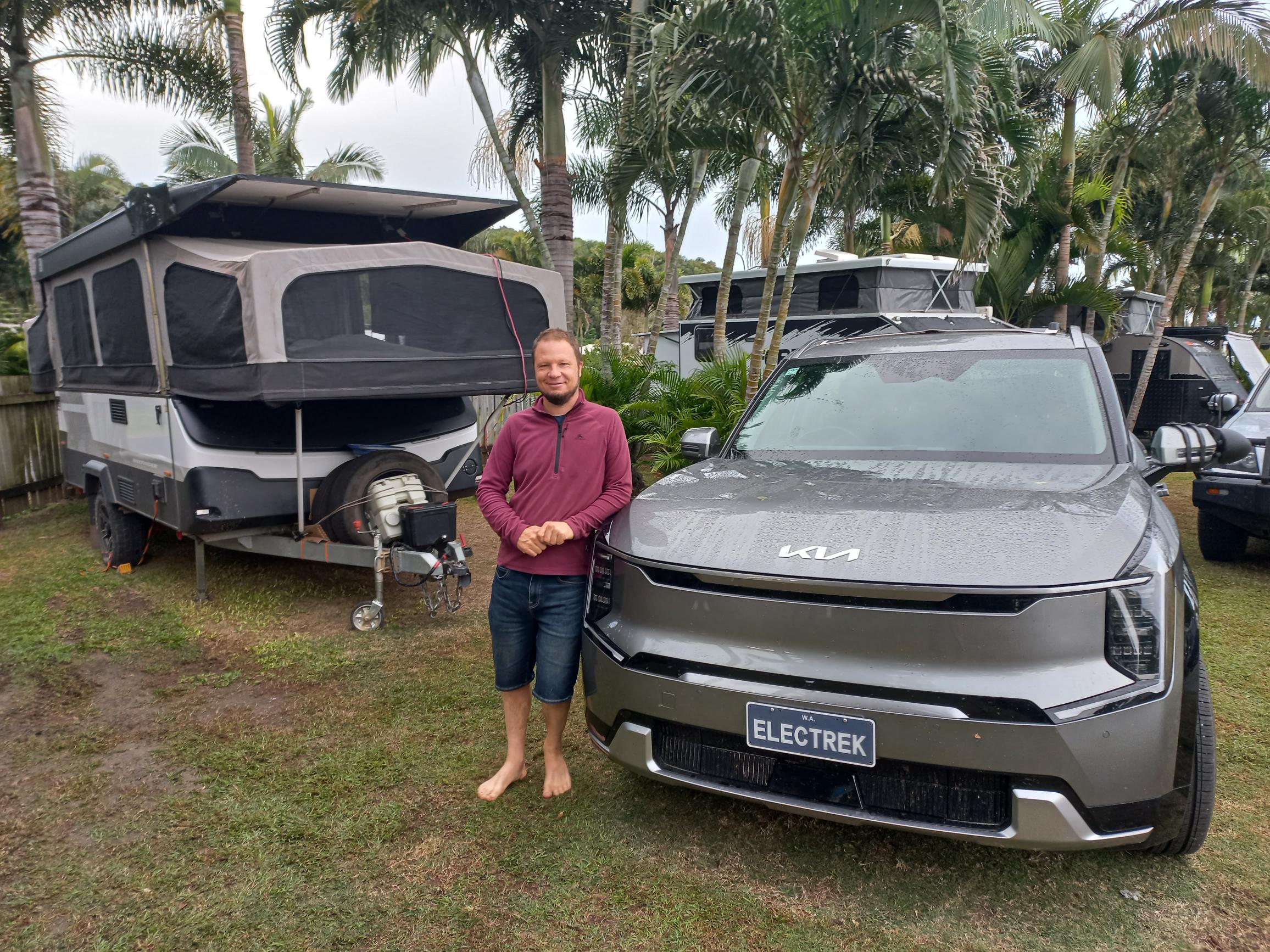Sign up for daily news updates from CleanTechnica on email. Or follow us on Google News!
Wave energy converters could harvest 29,500 terawatt-hours of renewable electricity from the ocean every year, which explains why researchers are still trying to design energy conversion devices even after the field suffered a major disappointment in the early 2000s. Now all that hard work is beginning to pay off, and wave energy is poised for its breakthrough moment.
A Wave Energy Comeback For Aguçadoura
If you’re guessing that a gigantic €9 million wave energy project under the wing of the firm Pelamis was the major disappointment, it sure was. In September of 2008 Pleamis launched an ambitious plan to float 25 wave energy converters into the Atlantic Ocean off the northern coast of Portugal, at Aguçadoura in the Porto district.
The project started with the installation of three converters, and that’s where it ended. By December of 2008 all three devices were hauled into port after they sprouted leaks. The whole project ran out of funding in 2009, and Pelamis itself was shuttered in 2014.
Well, that was then. The rough-and-tumble waters off the coast of Aguçadoura still provide the perfect proving ground for new wave energy converters, and the Swedish firm CorPower Ocean has just finished putting its new commercial-scale C4 device through its paces there.
The deployment began in August last year. CorPower is happy to report that its wave energy converter met expectations for survivability, which is the stumbling block that tripped up the Pelamis project.
Beyond simply surviving at sea, wave energy converters also need to operate efficiently under a range of conditions defined as “normal” for the ocean. Converters need to be sturdy enough to handle storms, and they should also be able to operate efficiently even during periods of calm, when wave activity is minimal.
“Now proven at commercial scale, at the exposed Atlantic test site, CorPower Ocean’s C4 device has demonstrated unique ability to tune and detune according to varying sea states, limiting response to extreme storm waves (up to 18.5m) while amplifying motion and power capture in regular waves using novel phase control technology,” CorPower reported in February.
Next Steps For The Wave Energy Converter Of The Future
On the surface, wave energy conversion sounds simple enough. The basic idea is to transfer the kinetic motion of waves to a mechanical device that can be hooked up to a generator to produce electricity (see lots more wave power coverage here).
The devil is in the details, though. One problem is that wave energy converters need some kind of buoy or other flotation system. The bigger the converter, the bigger and more expensive the flotation system.
CleanTechnica first took note of CorPower’s approach to the problem back in 2021. The company described its high-efficiency system as similar to pumping system of human heart muscles.
“In a similar way, our Wave Energy Converters use a pre-tension system to pull the buoy downwards,” CorPower explains. “Wave swells push the buoy upwards, while the stored pressure provides return force to drive the buoy downwards. ”
“This results in an equal energy production in both directions and a lightweight system that is naturally transparent to ocean waves (detuned) unless actively controlled,” CorPower adds.
Now that the C4 is in dry dock, CorPower intends to apply lessons learned from the demonstration project to perform additional tweaks to the system. The next go-around at sea will again take place at Aguçadoura. The goal of the second deployment is to ramp the system up to full capacity, leading to assessment under the IEC 62600 technical standards for wave energy converter performance.
A Wave Energy Converter In Every Port
That’s just one example in a rapidly expanding field. An entirely different approach is illustrated by the Israeli startup Eco Wave Power, which is also closing in on commercial deployment.
Instead of floating its conversion devices out to sea, Eco Wave Power has come up with a port-side installation system that eliminates the cost of offshore anchoring systems and sub-sea electricity cables.
Eco Wave Power has been operating its wave converter off-grid at Joffa Port in Israel since 2014. Plans are in the works to expand that facility and connect it to the grid. Eco Wave Power also launched its first grid-connected project in Gibraltar in 2016. The Gibraltar equipment is currently being repurposed for duty at the Port of Los Angeles, where it will operate on a pilot basis.
 Chip in a few dollars a month to help support independent cleantech coverage that helps to accelerate the cleantech revolution!
Chip in a few dollars a month to help support independent cleantech coverage that helps to accelerate the cleantech revolution!
Fossil Fuels Are Toast, Part Infinity
That figure of 29,500 TWh/year comes from the Intergovernmental Panel On Climate Change. For the US, the technically recoverable amount of wave power has been estimated at 1,170 TWh. By way of comparison, that’s about 30% of the nation’s annual electricity consumption, which has hovered in the range of 4,000 TWh in recent years.
All those clean kilowatts bobbing along the US coastlines present a tantalizing prize, especially for coastal communities — including military facilities — that lack space on land for renewable energy projects.
Though progress has been slow until now, the US has just put the finishing touches on an elaborate new wave power testing facility, located on the Pacific coast where wave resources are optimal. New deployment-ready devices are already lining up for a turn at the test bed.
In the meantime, the Energy Department is also continuing to shepherd next-generation devices into the earlier stages of development.
One especially eye-catching system involves a new approach called DEEC-Tec, short for distributed embedded energy converter technologies. DEEC-Tec systems are flexible materials interwoven with small, individual generators. They can harvest energy from buildings, clothing and other sources as well as ocean waves, and they can take on many different forms.
“For example, DEEC-Tec-based wave energy converters could look like balloons that contract and expand, snakes that undulate, or paddles that twist and bend to harness ocean wave energy,” explains the Energy Department’s National Renewable Energy Laboratory, which has already patented a DEEC-Tec wave energy converter.
NREL also participates in the Energy Department’s “TEAMER” network of wave converter testing facilities. The network includes inland tank testing facilities and computer labs, which are deployed to assess up-and-coming devices before exposing them to the punishing environment of the ocean.
Adding to the existing resources, scientists at NREL have just developed a new testing platform that enables researchers to feed data from physical devices into a virtual model called the Wave Energy Converter SIMulator, or WEC-Sim for short. The platorm enables developers to save time and money by spotting design flaws as well as opportunities for improvement earlier in the R&D process.
“Developers can simulate a scaled-up version of their design to evaluate larger-scale or even full-scale generators used in smaller wave energy devices—like those designed to power offshore seafood farms, ocean observation sensors, or ocean water desalination,” NREL explains.
CleanTechnica first spotted the wave energy movement shortly after we launched in 2008, so this has been a long wait. Still, if wave-based devices can capture even a small percentage of those 1,170 TWh, it will have a significant impact on the pace of the US energy transition.
Follow me @tinamcasey on Bluesky, Threads, Post, and LinkedIn.
Image (screenshot, cropped): CorPower’s new wave energy converter has passed the first phase of commercial testing (courtesy of CorPower via YouTube).
Have a tip for CleanTechnica? Want to advertise? Want to suggest a guest for our CleanTech Talk podcast? Contact us here.
Latest CleanTechnica TV Video
CleanTechnica uses affiliate links. See our policy here.





